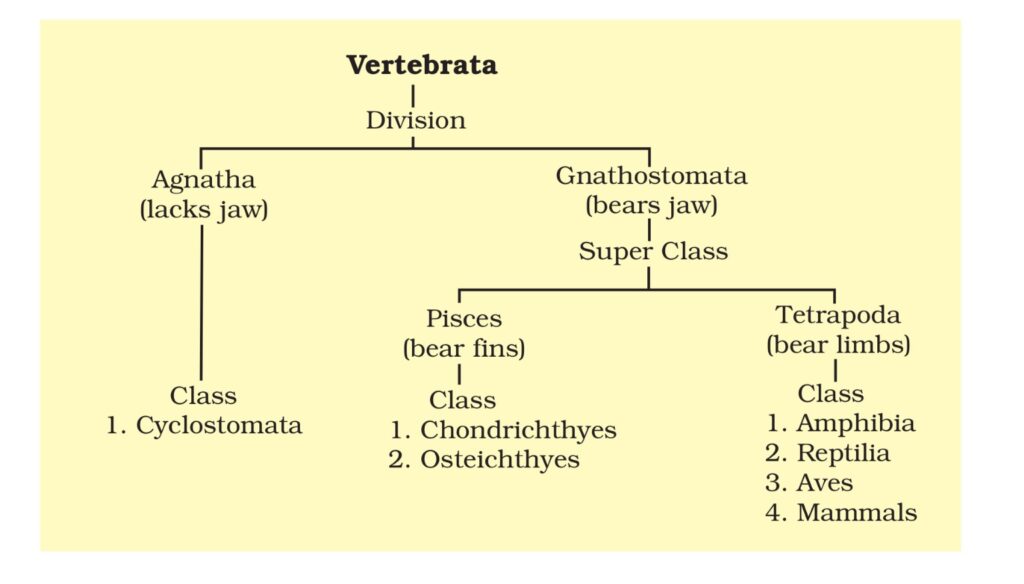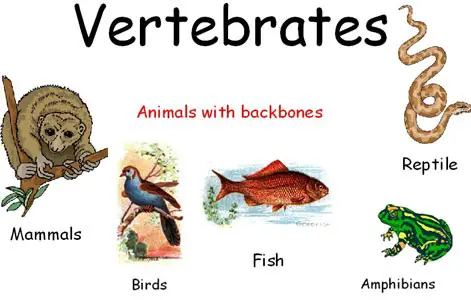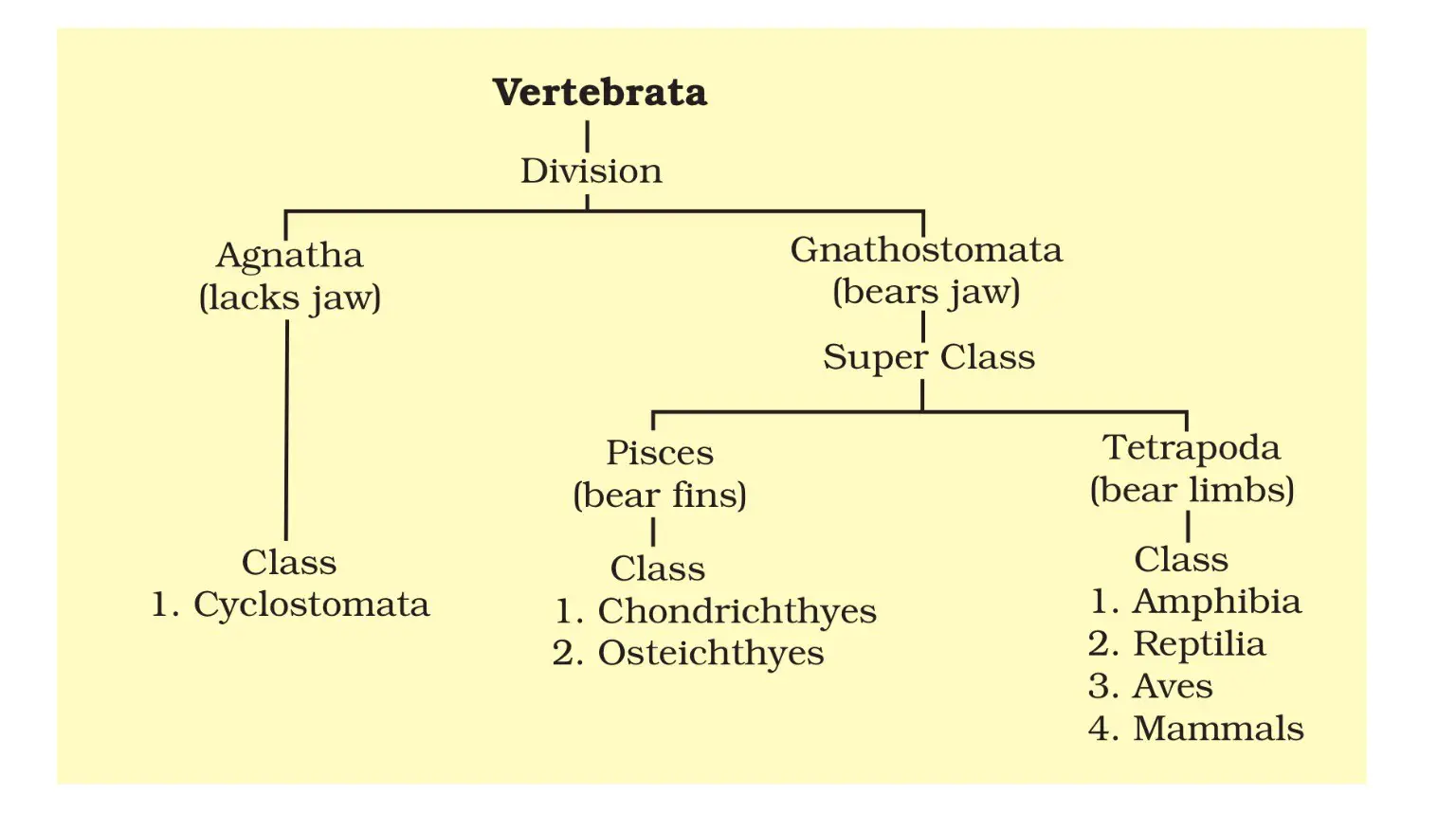Basis of Classification in Subphylum Vertebrata: Every time we try to classify any groups of animals we first consider some special features which are not present in all members of the group and the features which separate a group of animals from another group of animals. The features determine the relationship among different groups of animals so at first we try to place the animals together with similar features and separate them from the group of animals with which they show a great difference.
During the classification of Subphylum Vertebrata, we also try to find the important features which can be used to separate them into different categories. We will list all the features which scientists used to categories them into several categories.

Table of Contents
Basis of Classification in Subphylum Vertebrata
Jaw:
The jaw gives extra strength to the mouth, especially for the predators it helps in capturing the prey effectively. In primitive Vertebrate like in Cyclostomata, the mouth opening is not bordered by the jaw, they are known as jawless Vertebrate. Based on the presence or absence of the jaw we classify the Subphylum Vertebrata into two groups Agnatha and Gnathostomata, Agnatha does not have a jaw while Gnathostomata has a jaw. Cyclostomata and Placodermi are two classes of group Agatha in which the mouth opening does not show jaw.
Paired Appendages:
Paired appendages is an important feature in Subphylum Vertebrata but the type of paired appendages is not similar in all Vertebrate. In some cases, the appendages are modified into the fin, and in some cases appendages modified into limbs. On the basis of type of appendages group, Gnathostomata is classified into two superclasses classes, superclass Pieces have fin as appendages, superclass Tetrapoda have limbs as appendages.
Endoskeleton:
In Subphylum Vertebrata the body frame is made of bony or cartilaginous endoskeleton which gives the body mechanical support. Based on the type of endoskeleton we can classify superclass Pieces into Chondrichthyes and Osteichthyes, the fish in which the endoskeleton is made of bone is known as Osteichthyes and the fish in which endoskeleton is made of cartilaginous tissues is known as Chondrichthyes.
Respiratory Organs:
Members of Subphylum Vertebrata also show great variation in respiratory organs, the primary respiratory organs present in Subphylum Vertebrata are gills, lungs, in some cases skin also take part in respiration. The aquatic Vertebrata like members of class Placodermi, Cyclostomata, Ostracodermi, Chondricthys, Osteicthys respire through gills.

The terrestrial Vertebrate generally respires through the lungs, in mammals, birds, reptiles the main respiratory organ is the lungs. Amphibia respire through lungs in the adult stage in terrestrial life but during development in the larval stage, they respire through the gills in aquatic life.
Amniota and Anamniota:
In Subphylum Vertebrata during embryonic development, the embryo is protected by some extraembryonic membrane. But in all members of Subphylum Vertebrata do not have the same type of extraembryonic membrane, based on the extraembryonic membrane we can classify them into two classes, Amniota and Anamniota.
In class Cyclostomata, Osteicthys, Chondricthys, Amphibia only yolk sac and chorion present but amnion absent so they are known as Anamniota. In class Reptilia, class Aves, class Mammalia all the four components of the extraembryonic membrane are present ( amnion, chorion, allantois, and yolk sac) so they are known as Amniota.
Endothermic and Ectothermic:
All the animals are not able to maintain their internal body temperature fixed irrespective to their external environment, some can keep constant body temperature are known as Homieothermic while the animals in which the body temperature varies with the external environment are known as Poikilothermic.

Class Aves and class Mammalia can keep constant body temperature irrespective of the external environment so they are known as Homieothermic or Endothermic. But other classes of Subphylum Vertebrata are not able to keep their body temperature constant, they are known as Poikilothermic or Ectothermic.
Detailed Study On Subphylum Vertebrata Definition Characteristics Classification Examples and Diagram
Reference
An Overview of Classification in Subphylum Vertebrata
Subphylum Vertebrata and its Diversity
Cephalochordata Characteristics Features Classification Examples and Diagram
Urochordata Classification Morphology Characteristic Features
Characteristics Features of Hemichordata
General Comparison of Hemichordata Urochordata and Cephalochordata
Comparative Study of Digestive System in Hemichordata Cephaochordata and Urochordata
Hi Everyone!!! Welcome to Imaluop. Imaluop always try to learn some new and he want to share to other people. Here we will try to learn various topics on Science, specially on Biological Sciences.
